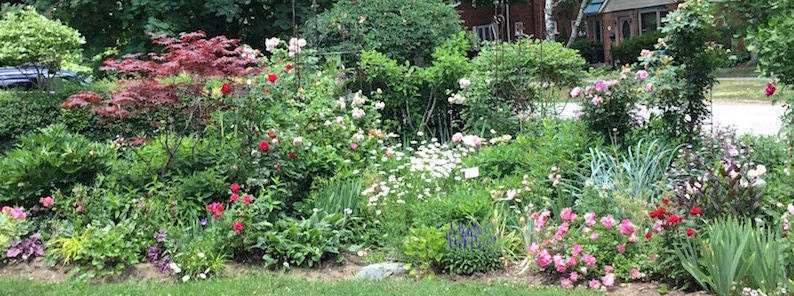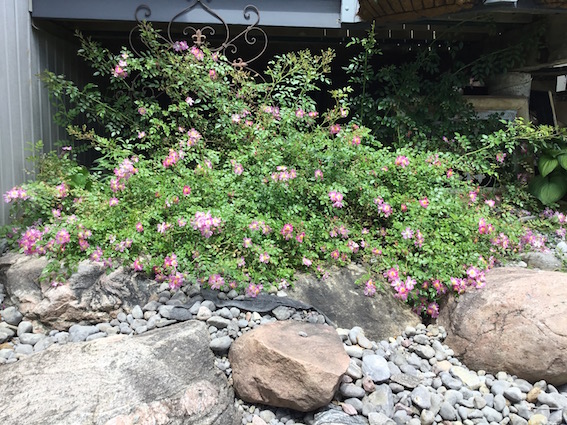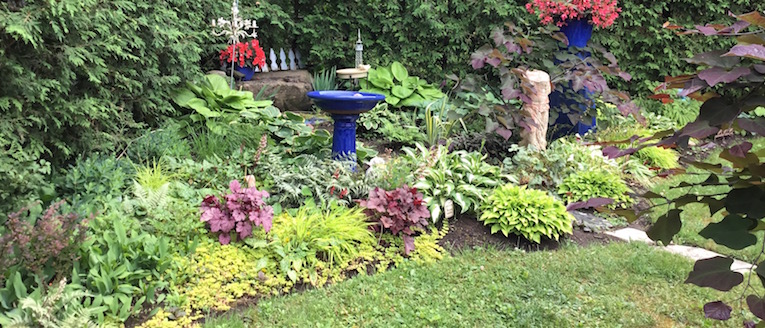| Back to Back Issues Page |
 |
|
Garden Bliss & Blunder, Issue #001 July 07, 2021 |
IT’S SUMMER, NOW WHAT?
LET'S TALK ABOUT DEADHEADING PERENNIALS (it's all Part of pruning)
(by the way, I tend to use mostly common names but I will make more effort to add the Latin as well... for this newsletter, bear with me while I get the process down first. ... and thanks). YOU'LL NEED A FEW TOOLS: Like hand pruners (secateurs) or hedge pruning shears DEADHEAD: (cutting away dead flowers) Like these: Echinacea (Cone Flowers) Monarda (Bee Balm) Peonies Roses Sedums Yarrow Iris
Remove faded blooms as soon as you see them - Otherwise,the plant puts energy into making seeds instead of blooms.
FOXGLOVE,SWEET WILLIAM & HOLLYHOCKS set seed pods so cut them back after the seed pods appear and save them. DAISIES,IRIS,CORAL BELLS, FOAM FLOWER, & HOSTA Cut back the bloom and stem) they won’t often re-bloom... but tidies the flower bed
DIANTHUS When done blooming, it has a nasty hairdo with dead ends.... chop them back to healthy leaves and many will surprise you with more blooms.
HYDRANGEA,PEONIES or LAVENDER - bloom at a the tips of their stems so cut back down the stem to a healthy set of leaves. Take enough off but still leave the plant or bush attractive... obvious bare spots won’t grow back this season.
ROSES: cut back down the stem to a 5 leaflet and a new bud will be there. 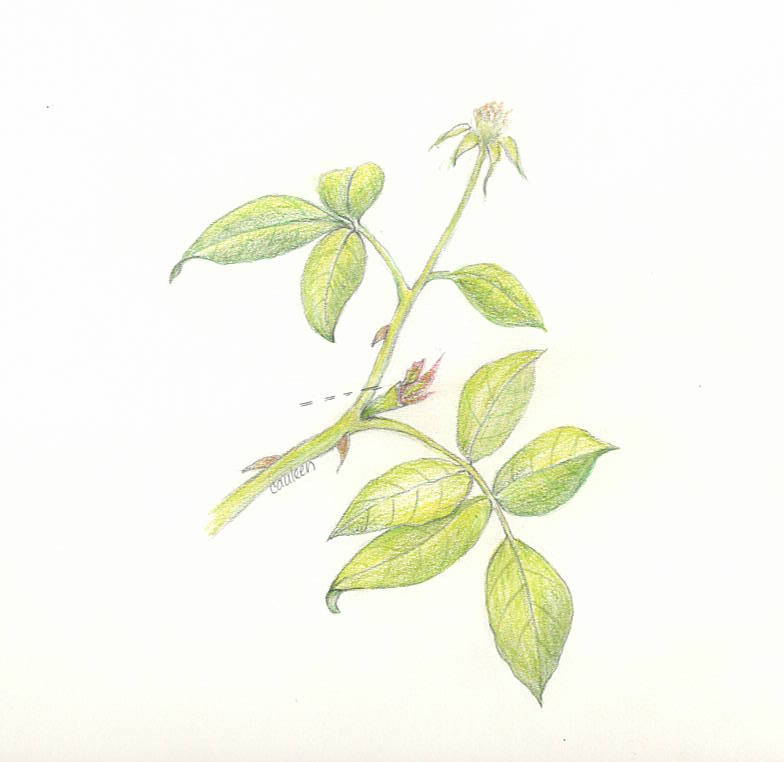
TIP: In late May or early June, plants that bloom later like PHLOX or MONARDA can grow too tall for the garden and if you have a lot of them all blooming at once in late summer, you’ll have colour only on the top.
You can also do this with CAMPANULA, ASTER, ECHINACEA, RUDBECKIA, SEDUM and even PENSTEMON. The idea is to control the height of the plant and its bloom
FOR EXAMPLE: In a bed of PHLOX - cut back the front plants short, the middle taller and leave the back. Now the blooms will cascade upward instead of all being at the top.
The growth of the lowest ones will be thick and bushy, hiding the often bare legs of the tallest Phlox.
This works with ANNABELLE HYDRANGEA too.
PENSTEMONS grow tall - and if they are in the front of the border, chop them in half or more and by late June they will still flower, but shorter. Rather like the "Chelsea Chop"...
LADY'S MANTLE benefits from cutting back when finished flowering. Underneath, the plant has new leaves and cutting back forms a tidy plant.
LAMB'S EARS also benefit from a trimming... tidier as the spent blooms turn brown.
LILIES - just cut off the dead blooms and leave the green leaves
MONARDA,ECHINACEA & CONE FLOWERS often have stems with multiple flowers; cut back to a new set of buds, just below the spent bloom(s) 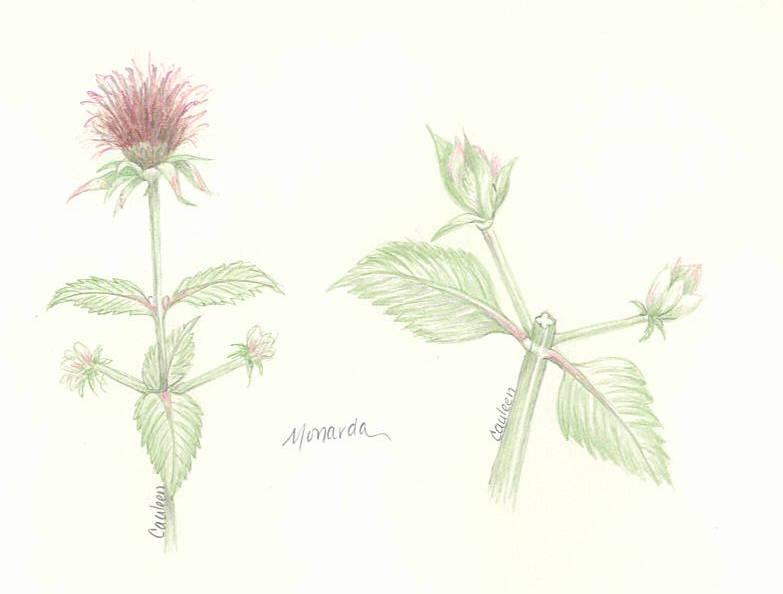
WOODY-STEMMED plants are not so accommodating though. They are pruned differently and will be covered in another article.
TIDY any plants that throw out random stems, have dead blooms or dying leaves and keep your perennial garden neat so it will bless you with more blooms. AND WHAT ABOUT THOSE GARDEN "THUGS"? What does that really mean? First, the nitty-gritty form the experts. Let’s find out. The Ontario Invasive Plant Council says: "Invasive species are plants, animals and micro-organisms found outside their natural range, and whose presence poses a threat to environmental health, the economy or society." (Government of Canada, 2004)
Each country will have its own definition But let's start with these: NATIVE - grows naturally and doesn’t need any help from us NON-NATIVE - brought in deliberately or accidentally by humans, transport or animals INVASIVE - not always non-native - takes over easily if we aren’t careful AGGRESSIVE - all plants, can take over if we let them VIGOROUS - outgrows pets and small children in a season - ‘nuff said Here are some unique Terms Plant Catalogues use with Ursula Chautems' own interpretations, - Canadian Gardening Magazine - 2006
TERRITORIAL: fits in well in the Balkans SLIGHTLY SPREADING: has taken over the Balkans EASY CARE; FLOWERS ALL SUMMER: plastic VERY DESIRABLE: costs more than the national debt RAMBLING ROSE: - and true to its name, it rambles...
All kidding aside, what if you happen to like plants that might not be native, or might even be considered invasive or aggressive?
Such as:
AJUGA - fiend or friend? - creates a creeping carpet or mat; spreads quickly with attractive blue flowers BUT…. it smothers weeds;good for erosion control on slopes and easily controlled.
I planted Ajuga to keep the weeds away under my roses where I can’t always reach… it works for me.
LILY OF THE VALLEY - likes deep shade; a ground cover or green mulch; keeps weeds from that back corner of my garden; it grows where other flowers may not and even has some medicinal uses when dried. Besides, it showed up one day, escaping from the neighbour's yard, fondly reminding me of my Mother who loved the small bouquet I pinned to the lapel of her jacket. The scent of those small perfect white bells by my bed is a sleep inducer of the best kind. I keep it in my garden for these reasons.
And CREEPING JENNY? I can almost hear you.... no, no, not that... but for me? It edges my mostly shade garden under the Black Walnut tree and presents that beautiful pop of lime green, setting off the burgundy HEUCHERA. It's rather like a little glow, drawing my eye to that part of the garden that can seem so dark.
REMEMBER - ALL PLANTS HAVE A PURPOSE: - know what you want each plant to do for you while respecting how they want to grow.
Put them where both of you will be happy and make sure they stay there.
Work with nature and you'll both get what you want.
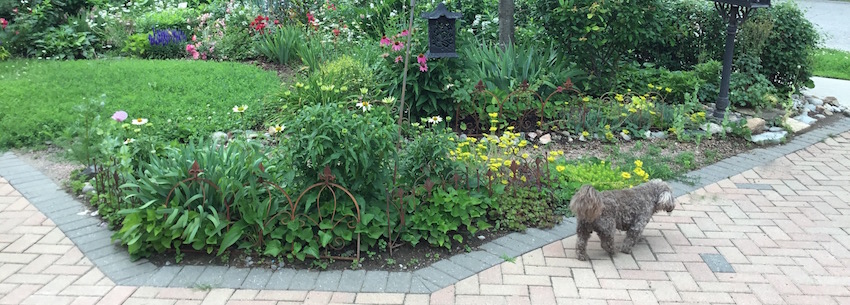
Bye for now....Lucy and I are off to the garden... And thanks again for subscribing to my newsletter... I hope you find something that makes you think, or that you can use to give your garden the bliss you deserve.... and never be afraid of the blunders.... they too, have lessons. Until next month, Please go out and enjoy your garden, but if it's a rainy day, go back to my HOME page...and see what else is there. Cauleen |
| Back to Back Issues Page |
